Sensors already equip a range of tools to enhance monitoring capacity for conservation. Some of the higher bandwidth technologies, like camera traps and acoustic monitoring systems, have been essential elements of the conservation toolkit for decades, and thus have enough users that we've created dedicated WILDLABS groups to address them. But a whole range of lower bandwidth sensors beyond these core technologies are being increasingly integrated into conservation monitoring systems, and offer rich new insights into the wildlife and ecosystems we're all working to protect. As with many technologies, cost and access have historically been challenges to the adoption of new sensors, but with low-cost and open-source solutions on the rise, we're excited to see what the future of this space holds.
Getting Started with Sensors:
- Watch Shah Selbe's Tech Tutors episode on scaling FieldKit, an open-source conservation sensor toolbox, from a project to a successful conservation tech product.
- Check out our Virtual Meetup about Low-Cost, Open-Source Solutions in conservation tech, including a talk by Alasdair Davies on the Arribada Initiative's work with thermal sensors in early warning systems.
- For a more in-depth introduction, watch the first video in our datalogger mini-series: Freaklabs: How do I get started with Arduino?
In this group, you'll meet others who are using and innovating diverse sensors in their work, discuss ways to make sensors more effective & accessible for conservationists, learn about what sensors are already helping us accomplish in the field, and have the opportunity to ask and answer questions. Join this group to get started!
Header image: Emma Vogel, University of Tromsø
No showcases have been added to this group yet.
World Wide Fund for Nature/ World Wildlife Fund (WWF)
- 0 Resources
- 4 Discussions
- 8 Groups
- @ConnieWhiting
- | She/They
University of Cambridge
PhD at Cambridge Zoology, working in Cichlid plasticity and evolution
- 0 Resources
- 2 Discussions
- 3 Groups
- @srfreeze
- | He/Him
I am a wildlife expert with a decade of experience working with bats and proven success in efforts to study, manage, and conserve the species. I work at the nexus of advanced technologies and deep ecological understandings to provide effective solutions to government, academic, a
- 0 Resources
- 0 Discussions
- 11 Groups
- 0 Resources
- 0 Discussions
- 7 Groups
A chemist by training and enthusiast about the environment by nature. Currently finishing my PhD where I was lucky to merge several of my passions such as programming, data analysis, aquatic ecology and analytical chemistry.
- 0 Resources
- 0 Discussions
- 7 Groups
- @limburan
- | she/her
Bat Conservation Trust
Research Scientist at Bat Conservation Trust
- 0 Resources
- 0 Discussions
- 10 Groups
- @kristian.cuervo
- | He/Him
Applied Mathematics student in Denmark, interested in applications of mathematics to ecology and nature conservation. Currently interested in developing sensors for perimeter detection in wildlife conservations in Africa.
- 0 Resources
- 4 Discussions
- 9 Groups
- @Jen_NZ
- | she/her
- 0 Resources
- 3 Discussions
- 7 Groups
- @cappel
- | she/her
Wildlife Science PhD candidate working on computer vision with camera traps and bioacoustics
- 0 Resources
- 5 Discussions
- 13 Groups
- @capreolus
- | he/him
Capreolus e.U.
wildlife biologist with capreolus.at





- 1 Resources
- 78 Discussions
- 16 Groups
- @JakobWiren
- | He,him
Swedish soon-to-be graduate engineer in AI/ML and robotics. Writing my master thesis in using decision trees for anti-poaching in Limpopo, South Africa. Am passionate about conservation, AI and travelling. Help me find a way to help you!
- 0 Resources
- 1 Discussions
- 13 Groups
- @Mauricio_Akmentins
- | he/him
National Scientific and Technical Research Council of Argentina (CONICET)
Researcher and conservationist, focused on the conservation of the endemic and threatened amphibian species of Andean ecoregions of NW Argentina.

- 1 Resources
- 3 Discussions
- 6 Groups
Article
How does tracking technology meet the many challenges specific to monitoring birds within their home ranges and over long distances during migration? WILDLABS community member Virginie Perilhon from Xerius Tracking...
23 April 2020
Article
At the 2018 London Illegal Wildlife Trade Conference, we announced the WILDLABS Tech Hub, an accelerator programme created to support the development and scaling of groundbreaking technological solutions addressing the ...
13 April 2020
In the third part of his series of case studies focusing on preventing human-wildlife conflict within communities, Aditya Gangadharan looks at how one village in North Bengal maximised the potential of an early alert...
10 April 2020
The Monterey Bay Aquarium Research Institute's MARS ocean observatory may someday make conducting deep-sea research more accessible and affordable thanks to Deep-Sea Connect, their new wireless system engineered to ...
31 March 2020
Community Announcement
Our second WILDLABS Community Call took place on April 1st to continue the discussion started by Ben Tregenna in our Data Science group, in which he suggested the idea of submitting a collaborative entry to the X-Prize...
30 March 2020
Trapped inside during the COVID-19 quarantine and looking to engage with conservation science without leaving your desk? Citizen science projects like those on Zooniverse offer a great opportunity to impact scientific...
18 March 2020
Machine learning is rapidly expanding as a useful field research tool, but its complexity can intimidate even seasoned tech conservationists. Edge Impulse aims to make machine learning solutions accessible,...
16 March 2020
Article
Aditya Gangadharan's latest case study looks at how sensor technology can provide solutions for human-wildlife conflict instances along the Indo-Bhutan border. This project, which aimed to get the local community...
11 March 2020
Using technology in the field allows us to innovate new solutions to very old problems like human-wildlife conflict, but are you giving enough consideration to how your high-tech tools fit into long-term plans? Before...
9 March 2020
2020 marked our fifth year holding our annual #Tech4Wildlife Photo Challenge, and our community made it a milestone to remember. Conservationists took to Twitter last week to share their best high-tech snapshots from...
4 March 2020
The 2020 Tusk Awards are now accepting nominations of outstanding individuals who have made a significant impact on conservation in Africa. These nominations offer the rare and exciting opportunity to honor your peers...
3 March 2020
Are you ready for the Plastic Data Challenge? This global contest wants your innovative ideas for improving the plastic waste management and recycling chain in South and Southeast Asia. Participants can consider...
3 March 2020
August 2025
event
September 2025
event
March 2026
September 2024
event
July 2024
event
17 Products
Recently updated products
121 Products
3 R&D Projects
84 Organisations
Recently updated products
Recently updated R&D Projects
Recently updated organisations
| Description | Activity | Replies | Groups | Updated |
|---|---|---|---|---|
| I came across this which looks like it might work for you.Others have mentioned Davis. I used the Davis vantage pro2 in a previous life, and the cabled version was about... |
+13
|
Sensors | 1 year 8 months ago | |
| My suggestion would probably be a 3D printer and Solder Station with a stock of common components. With those two things you can solve most problems. |
|
Community Base, Emerging Tech, Marine Conservation, Protected Area Management Tools, Sensors | 1 year 8 months ago | |
| Cheers @Lars_Holst_Hansen , yes, the antenna foam spacer idea certainly helped us a bit. I completely agree though that ruggedness, especially on a polar bear (a bit different... |
|
Animal Movement, Sensors | 1 year 9 months ago | |
| Hi everyone, I wanted to provide an update on behalf of Wildlife Acoustics regarding some of these comments in this thread. As some of you may know, we have just announced... |
+19
|
Acoustics, Sensors | 1 year 10 months ago | |
| This was one of my all time favourite Variety Hour talks! @wschan gave us an awesome walk through the open-source low cost acceleratometer... |
|
Animal Movement, Open Source Solutions, Sensors | 1 year 10 months ago | |
| Makes sense if you have the cash... |
+8
|
Animal Movement, Climate Change, Sensors, Build Your Own Data Logger Community, Emerging Tech | 1 year 10 months ago | |
| 'Gundi, meaning “glue” in Swahili, is a technology platform that allows conservationists to seamlessly integrate any hardware with any... |
|
Data management and processing tools, Sensors, Software Development | 1 year 11 months ago | |
| Graeme, Maybe speak to a web IT expert. You may be able to have an interface on the webpage which provides the login credentials to the camera, but then passes the image (and... |
|
Camera Traps, Sensors | 2 years ago | |
| Does anyone know of a network camera that can stream live video direct to a browser page without requiring a password? Our Nest Outdoor... |
|
Camera Traps, Sensors | 2 years ago | |
| Hi all! I am a mechanical engineer working in the Aerospace Engineering department at a University, and I have the opportunity to take over... |
|
Emerging Tech, Human-Wildlife Coexistence, Marine Conservation, Open Source Solutions, Sensors | 2 years 1 month ago | |
| Ben Letcher from the comment below will be able to provide much more in-depth info, but feel free to email me at eric.greenlee.96@gmail.com |
|
East Africa Community, Sensors | 2 years 1 month ago | |
| Hi. I'm looking for an off-the-shelf saltwater switch for an undersea application. It needs to be depth rated Is there anything like this... |
|
Marine Conservation, Sensors | 2 years 3 months ago |
Technical Difficulties: Expect the Unexpected
 Eric Becker
and 1 more
Eric Becker
and 1 more
27 October 2021 12:00am
Using IoT and Machine Learning to help protect Kenya's Rivers
21 October 2021 12:00am
Technical Difficulties: Cleared for Takeoff
 Eric Becker
and 1 more
Eric Becker
and 1 more
20 October 2021 12:00am
Technical Difficulties: The Path to Success
14 October 2021 12:00am
Technical Difficulties: Understanding the Realities
 Eric Becker
and 1 more
Eric Becker
and 1 more
13 October 2021 12:00am
Download Now: Designing an Effective Conservation Technology Enclosure
24 September 2021 12:00am
Feedback welcome
17 August 2021 1:44am
22 September 2021 7:19am
Hi guys. Frontier Labs designed the Solar BAR for the Australian Acoustic Observatory (you mihgt have seen the WildLab video about it: https://www.youtube.com/watch?v=ohQURr74OvE&list=PLWcz3iwCnCqRL193GvknRWQd1_kG7Rs4g&index=1).
vIn answer to your question, we are currently putting together some short videos showing the design decisions we made during developme and why we made them. The weight vs battery power is something we take incredibly seriously, and is the reason for a lot of cool features you might not notice otherwise. Please let me know if you have any specific questions you would like covered and I'll do my best to get them answered by our engineers :) Nic
22 September 2021 7:25am
Hi Adam,
My name is Nicole, I work at Frontier Labs - we also make bioacoustic recorders (BARs) and are based in Brisbane, Australia. Yay for Australian tech!
We have been making acoustic recorders for more than 10 years (we made the recorders for the Australian Acoustic Observatory) and are always looking to innovate. These are great questions! We do get asked for the remote verification occassionally, but at the moment localization is a feature we are perfecting above and beyond what is currently available, so no work on this at the moment.
I'd love to find out more about your studies and see if we could help you answer some of these questions based on what we know about market trends.
Please feel free to get in touch with me if you'd like more info. PS I am not one of the engineers, but I have their ear haha
Tech Tutors: How do I use animal-borne imaging technology in marine and terrestrial environments?
26 August 2021 12:10am
15 September 2021 6:41am
Hi @Rob+Appleby !
The implementation in the Vectronic camera collar is purely store on board - no transmission.
I believe they simply stuck one of the Foxeer action ("Box") cameras inside and wakes it up and triggers it according to the camera schedule uoloaded to the collar (still and video options).
RunCam is another manufacturer of FPV and action cameras which might be interesting for you.
Cheers,
Lars
15 September 2021 11:24pm
Hi Lars,
I have a colleague that's successfully used the Mobius cam system (https://www.mobius-actioncam.com/) for camera collars as well. RC cams are popular choice it seems. I have been attempting to tweak cheaper 'cube' cameras (e.g. https://tinyurl.com/w72kh77r) to do a similar job. I am using a bit of Frankestein's monster array of small control boards, including an Adafruit low power timer (https://www.adafruit.com/product/3573) and a SparkFun pro mini (https://www.sparkfun.com/products/11113). I am using an SMD transistor as a switch to control power, and another could be added to control settings if needed. Hoping to do a tutorial on it at some point in case there's any interest.
Cheers,
Rob
16 September 2021 6:54am
Would certainly be cool to see a tutorial on this! Looking forward to that!
How do I choose the right camera trap(s) based on interests, goals, and species?
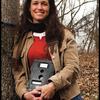 Marcella Kelly
Marcella Kelly
6 July 2021 12:00am
GroupGets: μMoth Now Available
27 May 2021 12:00am
(Arctic Fox) trap alarm based on LoRa Adafruit
21 April 2021 2:48pm
26 April 2021 7:03pm
Hi and thanks for your tips, Akiba!
I was actually thinking about the little greenhouse effect today when leaving the box in the afternoon sun. It is a rather cold environment in Greenland were I will deploy these though, so I may be OK. I can always give the tops a bit of white or silver paint. For the base station, I like to be able to see the LEDs directly on the board. This will also not be left out in the sun.
I will try to get some 2mm acrylic sheet for the mounting plate, thanks!
Cheers,
Lars
4 May 2021 9:50am
I realised I actually had a piece of FR-4 fiberglass (perfboard) lying around so I used this as mounting plate. I have also tried fixing the magnet (reed) switch to the plate to hold it in place at the bottom of the box. Will do some neater cable managing as I get the remaining parts. I will try to fit a lipo solar charger next to the radiofeather. I realised that it will be hard to attach USB plugs (for reprogramming or diagnostics) but have ordered some cables with angled plugs hoping they will fit.
I am still considering an additional reed switch as a on-off switch.
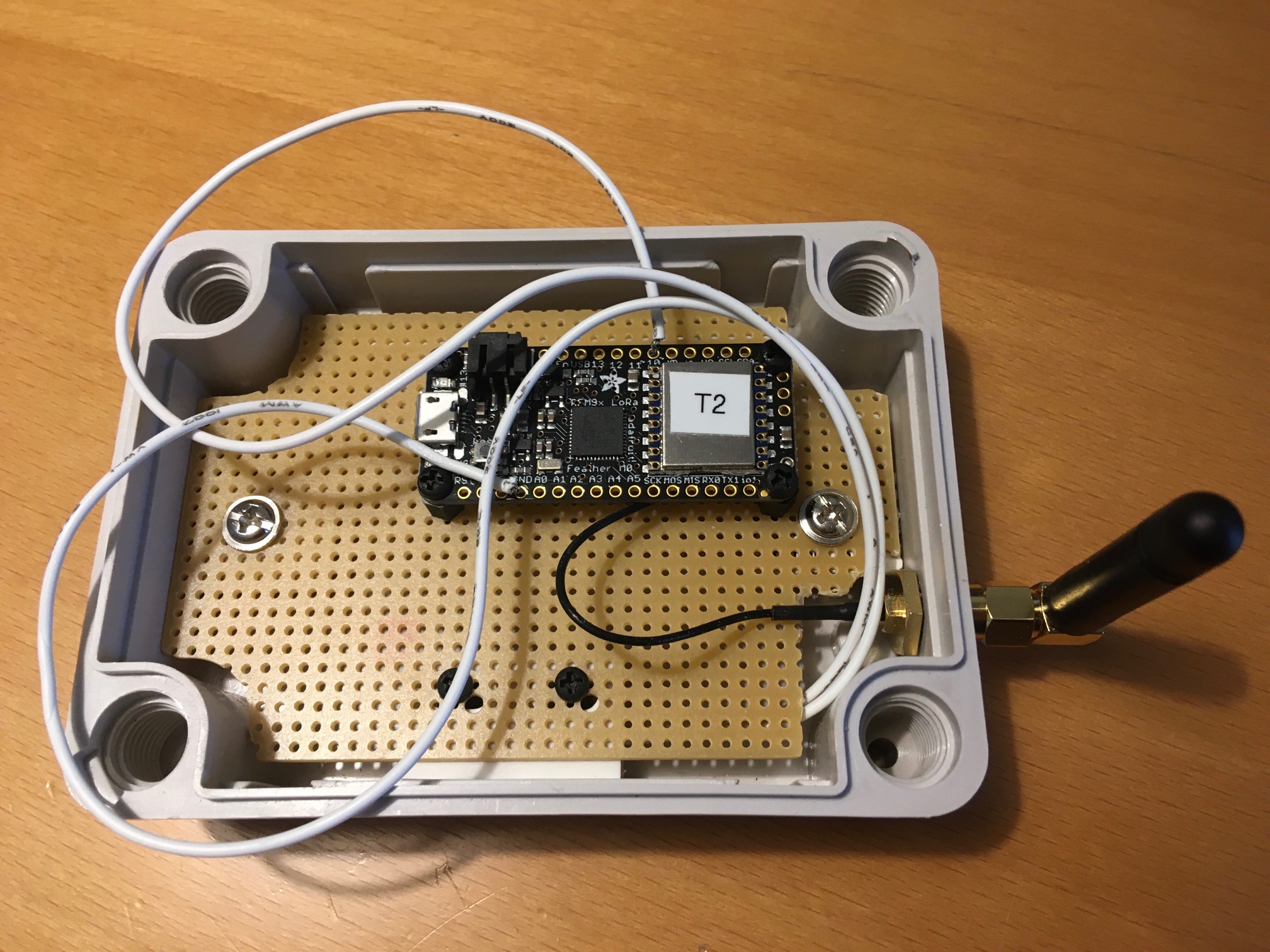
20 May 2021 2:41pm
Almost done with the trap alarms.
I added an additional buzzer (with internal circuitry) to get more noise. The added benefit is that the slightly different tunes creates interference that makes the sound much more annoying ;)
I added magnetic on-off switches to all units (under the power managiing unit). The trap release reed switch is located on the other side. I raised the base plates a bit to make room for the lipo batteries underneath them.
Still need to do some more testing on power usage and reliability. I managed a range of 2.5 km, but I believe I could get more when I find a place with better line of sight. I will try to test it over water at a fjiord.
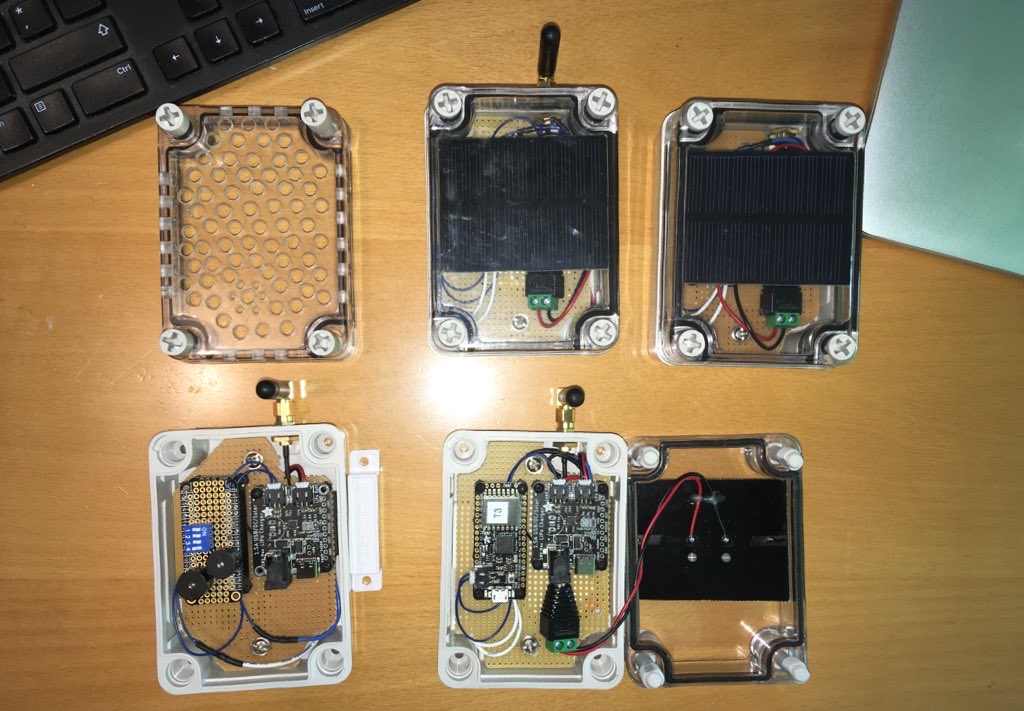
Announcing the Conservation Technology Award
4 May 2021 12:00am
WWF: Carnivore Collaring in Zambia
28 April 2021 12:00am
Webinar: Mission Possible: Deployment
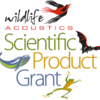 Wildlife Acoustics
Wildlife Acoustics
21 April 2021 12:00am
Margo Gadfly: A Versatile Wildlife Deterrent
31 March 2021 12:00am
The 2021 #Tech4Wildlife Photo Challenge: Community Highlights
25 March 2021 12:00am
Event: 2021 Open Hardware Summit
22 March 2021 12:00am
Arm technologies: What do you use?
10 February 2021 9:07pm
11 February 2021 3:45am
Hi Ellie.
This isn't necessarily wildlife but Jacinta and I used the CC1310 wireless chip with the ARM Cortex M3 inside for a project with the International Rice Research Institute. It was to test precision irrigation on rice crops for dry planting and to remove the need for the traditional flood based planting systems. This allows rice to grow in arid regions that traditionally can't support rice as a staple crop. Water scarcity is also a worry for the institute due to global warming, hence focusing on growing rice in low-water environments. There's more information on it here.
For those interested, the CC1310 uses 900 MHz and supports the IEEE 802.15.4 standard. It's one of the standard chips used in the SigFox protocol, although we mainly just used it for communications and not for SigFox implementation. We also implemented a gateway device that collected data from the networked rice paddies and sent water level data to the government server via GSM using SMS. We typically use HTTP but in the Philippines, cellular internet isn't as reliable as SMS, especially in rural areas. Both boards are based on the ARM Cortex M3.
I've attached pics of the wireless sensor boards and gateway we developed for this project as well.
Akiba

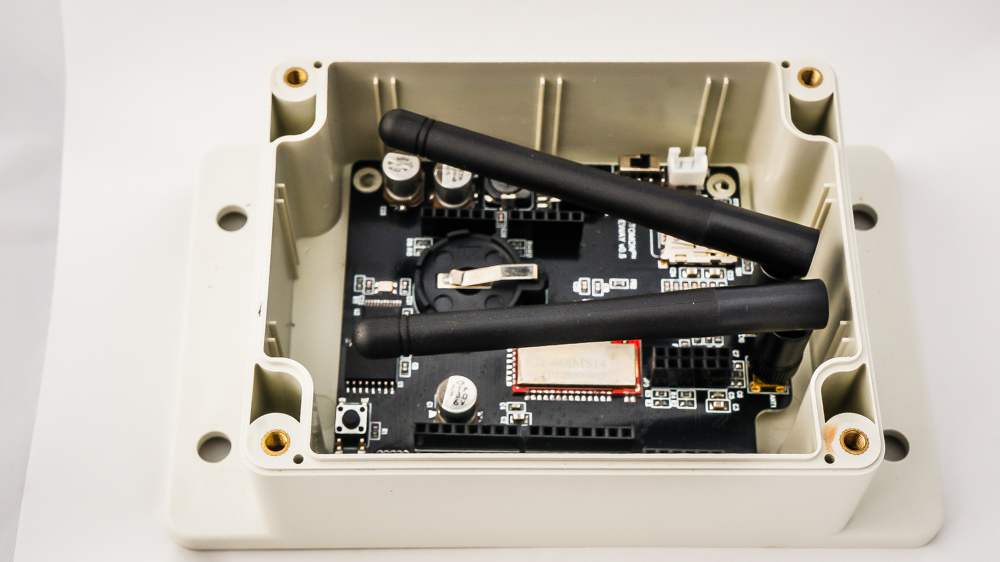
1 March 2021 12:33am
I've been tinkering with NVidia Jetson boards for about 2 years now. This is basically a small ARM computer, comes with an Ubuntu image but could run any linux I think. It's basically a mini computer with an Nvidia GPU, so you can do all sorts of things at 'the edge'.
I have been (on and off) building a bird feeder camera that would id birds and send just the text not images. Ultimately I would like to build a smart camera trap that would id animals and conserve bandwith by just uploading the data.
I started with the Jetson Nano, about 100 USD but when I started it was difficult to do things due to ARM.
Now I am working with a Jetson NX, about 500 USD and things are way easier. Visual Studio Code runs there natively, as do many python libraries and there are even a lot of containers ready made now.
Also, AWS has Graviton instances now - an EC2 ARM computer. One of my plans is to use AWS for building, testing, etc. and now ARM is an option there too.
12 March 2021 7:08pm
Hi Barry,
I am tinkering with similar edge devices and aspirations! I recently acquired the Jetson Nano to start testing some aspects of the BearID Project software pipeline. What were the main issues with the Nano? Is it mainly the build process (speed and memory)? The NX uses very similar CPU cores (but 6 instead of 4), bigger/faster DRAM (8GB vs 4GB) and much faster GPU (especially if you are using INT8 instead of FLOAT32). I'm also playing around with Raspberry Pi and a hardware accelerator.
The Arm-based EC2 instances on AWS should be a great help in compilation!
Full disclosure: I work for Arm, but developing on these platforms is not part of my role there. This is purely a passion project!
Ed
Funding Opportunity: COVID-19 Science Fund
10 March 2021 12:00am
Method for mapping & finding nest boxes
29 September 2020 12:03pm
1 March 2021 11:10am
I don't know much about them either. I do not think they need to face a certain way.
I am pretty sure they can be bougt in bulk. That is what the outdoor clothes companies do.
Try contacting Dale Atkins from RECCO.
2 March 2021 2:52am
Hi Lars, Nida,
Riffing on the Recco idea, if you have access to the detector, it's possible to make a Recco-compatible reflector for very cheap, since for this purpose it won't need to be sewn into clothing or put through a washing machine. There is no magic behind the reflector technology, I think it can be made in small quantities for USD1-2/each. It is basically RFID technology, and you know how cheap they're trying to be. Here is a paper talking about just that. Especially take a look at their reference [4], which details an attempt at making Recco-compatible reflectors, but using older components (the paper was published in 1997). There are much better components now.
I bet Recco detectors are expensive. But there's a way around that! 434MHz transmitters and 868MHz receivers are easy to get; together, these constitute the detector. Another possibility is 13.56MHz/27.2MHz. Not sure about the detection range though.
Thanks,
-harold
9 March 2021 9:26am
Thanks for the paper Harold, this looks like a possibility. Especially if there's a way to make bespoke detectors
Virtual Event: FieldKit Open House
9 March 2021 12:00am
Virtual Event: Carnivores and Camera Traps
4 March 2021 12:00am
Looking for old/dummy Vectronics collars
3 March 2021 8:07am
Collaboration Spotlight: BoomBox
 Ellie Warren
and 2 more
Ellie Warren
and 2 more
26 February 2021 12:00am
WWF: Protecting Ferrets with Drones and Vaccines
17 February 2021 12:00am
News: FieldKit Presales and WSJ Feature
11 February 2021 12:00am
How do I get started with LoRa? Connectivity in conservation
1 February 2021 12:00am
Protecting Wildlife with Machine Learning
29 January 2021 12:00am
New Paper: Empowering Rangers Through Technology and Innovation
27 January 2021 12:00am
WWF: Using Technology to Detect and Protect the Endangered Black-Footed Ferret
19 January 2021 12:00am
























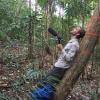























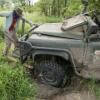

25 August 2021 9:11am
Hi All, sorry for the delayed response.
"In studies that often require deploying a half-dozen sensors or more, a sheer quantity of batteries becomes a major logistical hurdle. This is a similar problem we see with some solar systems: once deployed, they can be great (solar panel + charge controller + battery pack), but the deployment logistics can be extremely tricky from a bulk and weight perspective."
I agree, I don't believe that it should be necessary to be utilising such giant batteries & solar systems to support audio recording devices with the current developments of batteries and very low power devices, it annoys me that lead-acid batteries actually still exist.
I am assuming that the decision on batteries and photovoltaic systems would be based on availability and cost, or are they specific to acoustic devices?
Thanks All,
Adam.